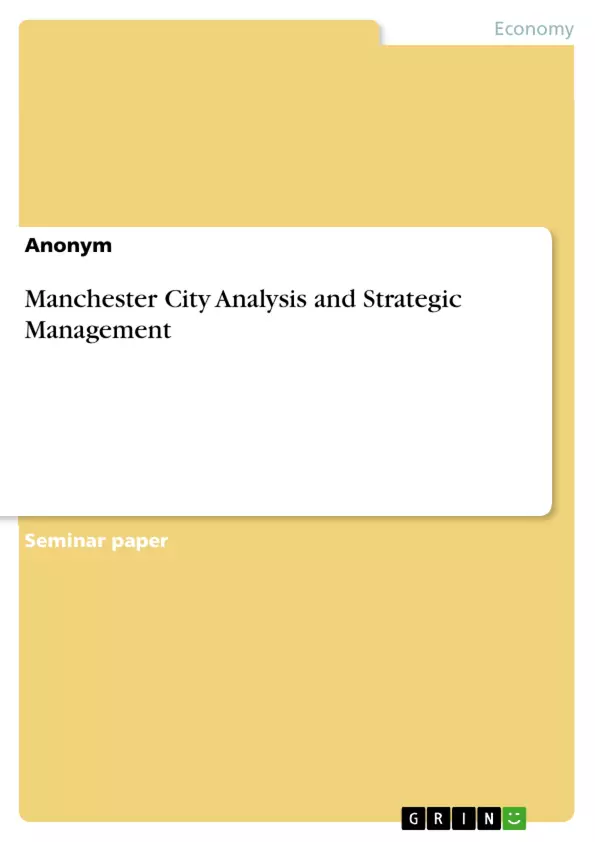This report provides an analysis of the internal and external factors affecting the Manchester City organization and its significance in the sporting industry. The discussion evaluates the factors by developing a PESTLE and Porter’s analysis on the external environment; function analysis and SWOT analysis on the internal environment; and the TOWS and Ansoff Matrix for the strategic management of the organization.
Manchester City Football Club is an English football club, which is based in Manchester and competes in the Premier League. Established in 1880 with the name ST. Mark’s (West Gorton), the club then changed the name to Ardwick Association Football Club in 1887, and later to Manchester City in 1894.
Since the club’s establishment, it has developed significantly in terms of its productivity and performance in the league. In the 2016-17 calendar year, Manchester City attained record revenues amounting to £473 million, while recording a third sequential yearly profit of more than £1.1 million over 13 months. The club also continues to operate with nil financial debts and significant wages and revenue ratios.
Inhaltsverzeichnis (Table of Contents)
- Introduction
- External Analysis
- Branding
- Investment
- Internal Analysis
- Innovation
- Strategic Options
- Social Media
- Organization Resources
Zielsetzung und Themenschwerpunkte (Objectives and Key Themes)
This report aims to provide a comprehensive analysis of the internal and external factors influencing the Manchester City organization and its significance in the sporting industry. It evaluates these factors through various frameworks such as PESTLE, Porter's Five Forces, functional analysis, SWOT analysis, TOWS, and Ansoff Matrix, ultimately contributing to the strategic management of the organization.
- The impact of branding on Manchester City's performance and global brand recognition
- The role of financial investments in shaping the club's success and influencing its position within the football industry
- The significance of social responsibility initiatives in fostering community engagement and local economic impact
- The evolution of Manchester City's brand strategy and its impact on fan engagement and marketing efforts
- The importance of strategic planning and innovation in ensuring the long-term sustainability and growth of the organization
Zusammenfassung der Kapitel (Chapter Summaries)
- Introduction: This chapter sets the stage for the report by introducing Manchester City Football Club, its history, and its current position in the sporting landscape. It also outlines the key frameworks and analytical approaches that will be employed throughout the report.
- External Analysis: This chapter focuses on the external factors influencing Manchester City, utilizing PESTLE and Porter's Five Forces Analysis. It highlights two key themes: branding and investment. The section on branding examines the club's global brand strategy, its evolution over time, and its impact on fan engagement. The section on investment explores the role of financial resources in the club's success and its contribution to the local community.
Schlüsselwörter (Keywords)
This report focuses on key concepts such as branding, financial investment, strategic management, community engagement, social responsibility, PESTLE analysis, Porter's Five Forces, SWOT analysis, TOWS matrix, and Ansoff matrix. It examines the impact of these factors on the performance and sustainability of Manchester City Football Club within the global sporting industry.
- Quote paper
- Anonym (Author), 2022, Manchester City Analysis and Strategic Management, Munich, GRIN Verlag, https://www.grin.com/document/1306553



